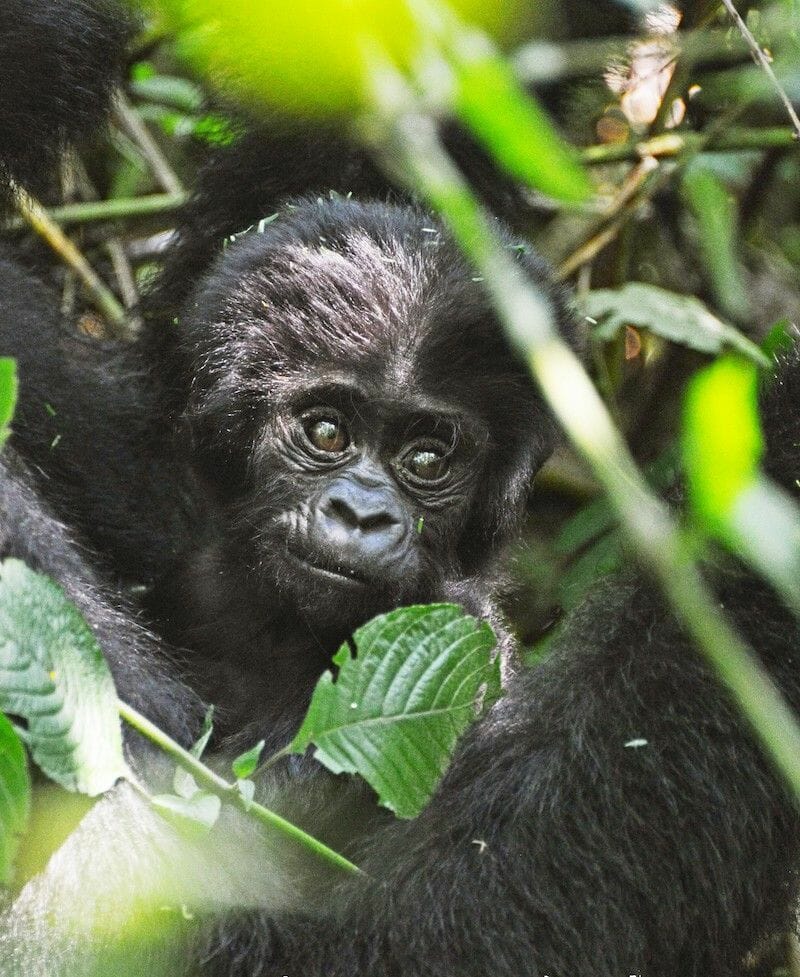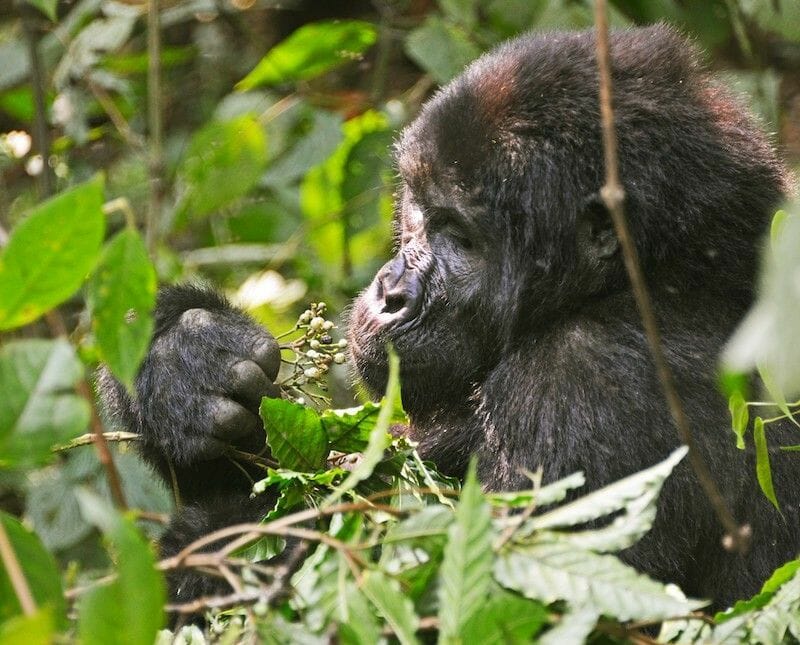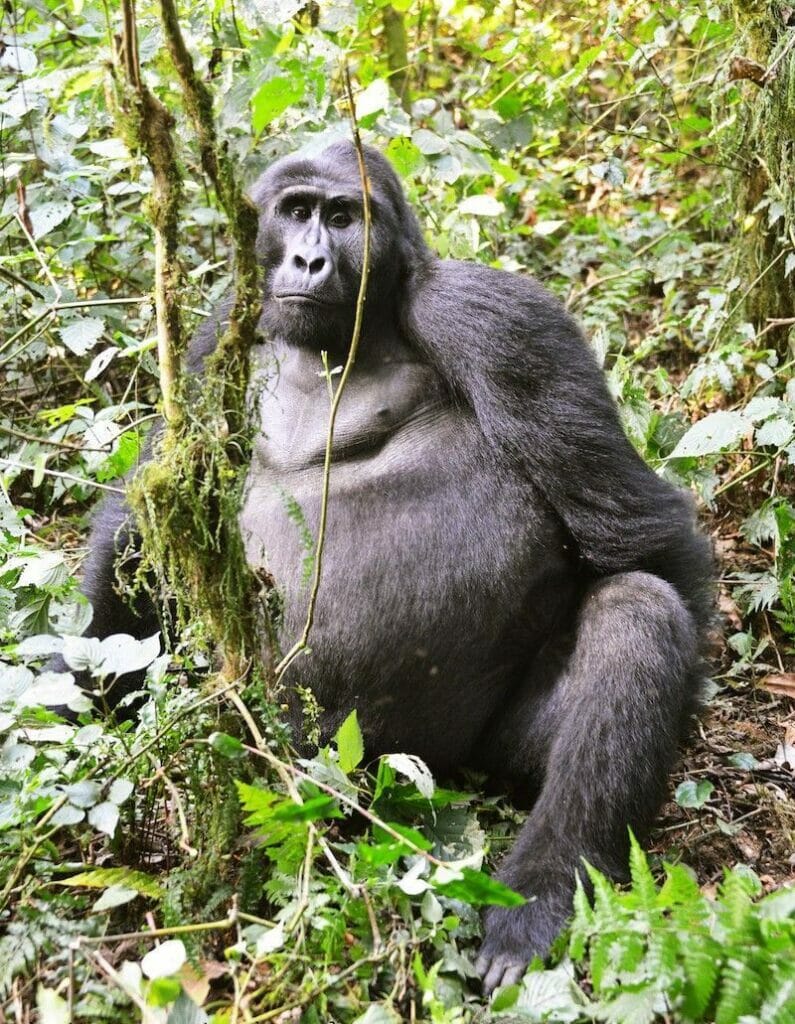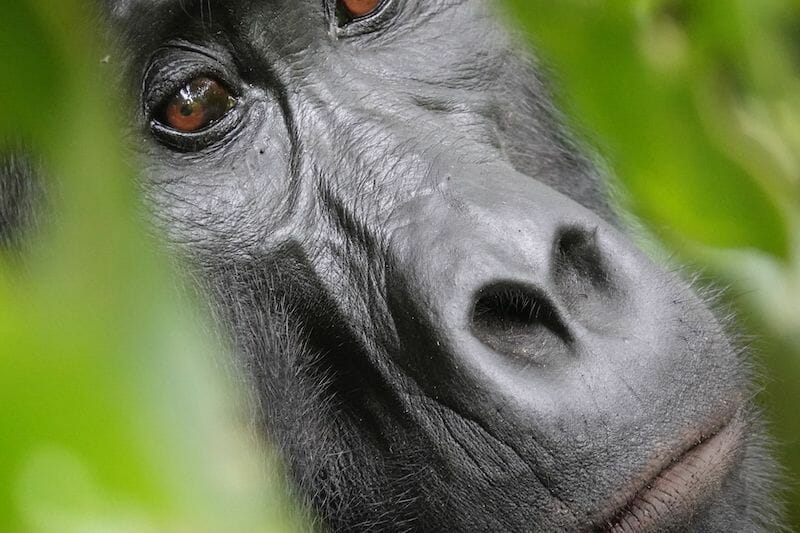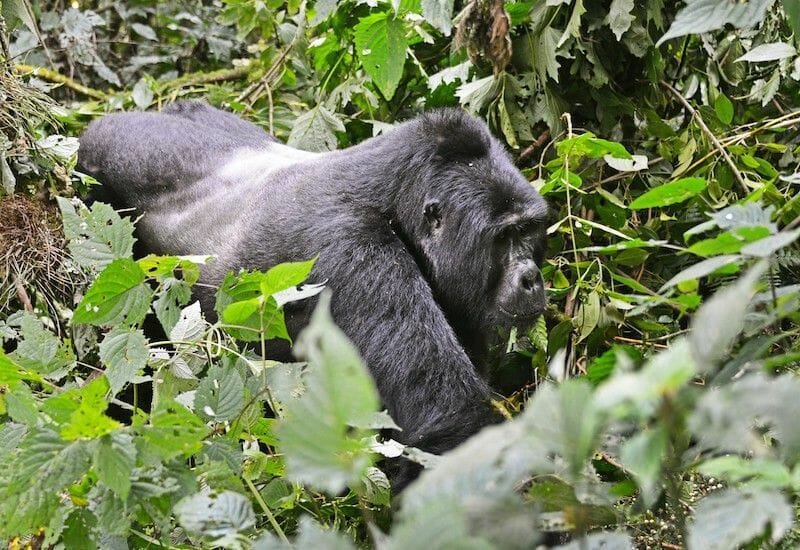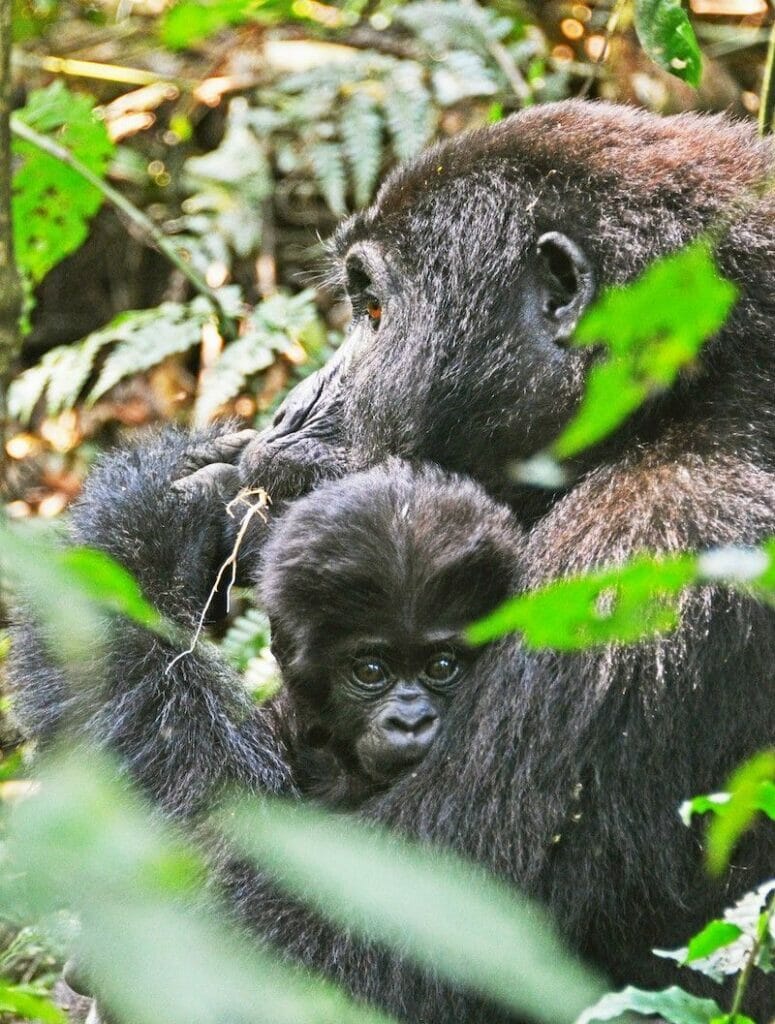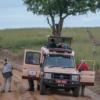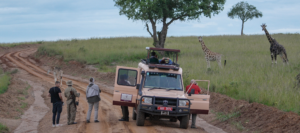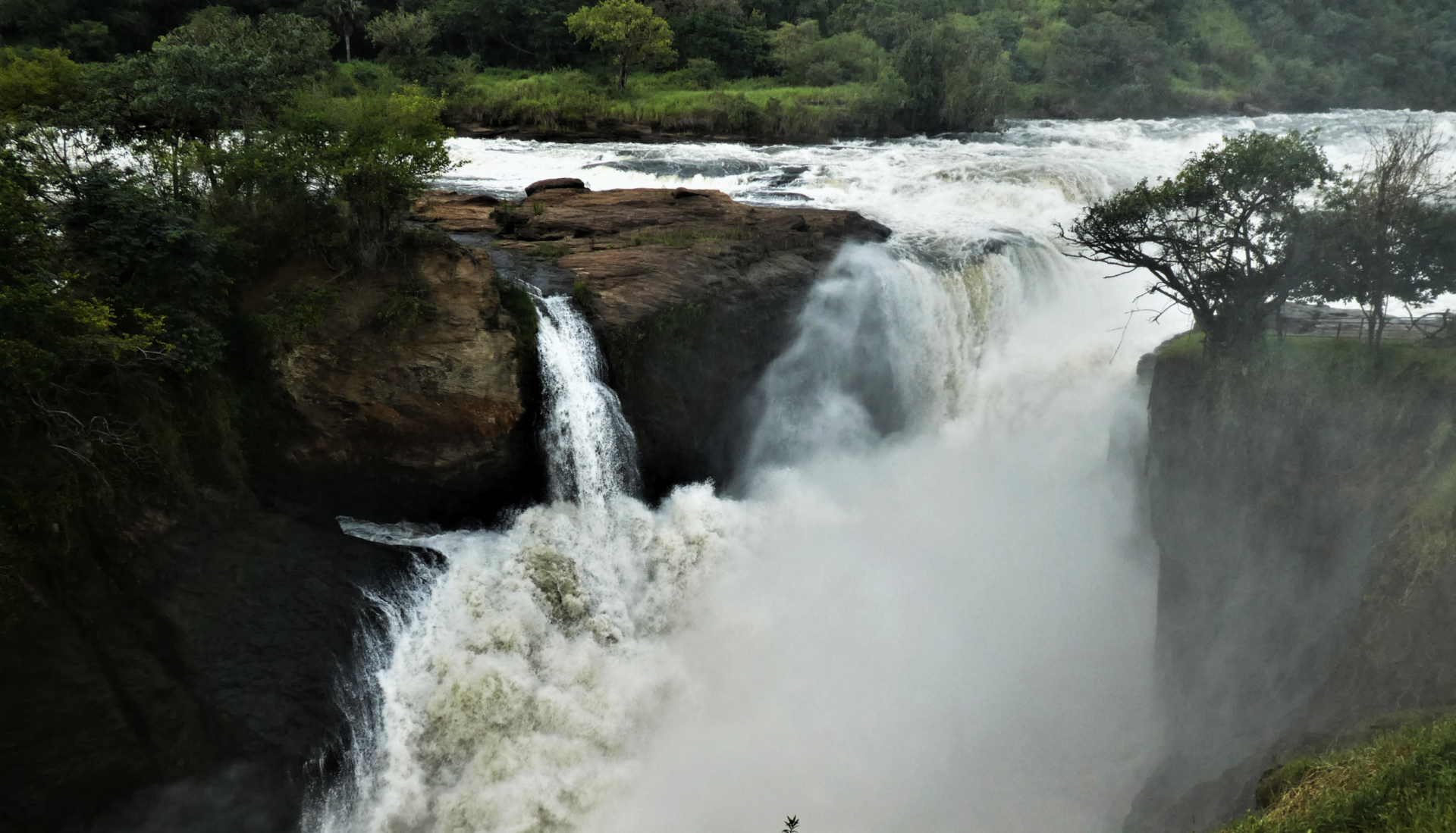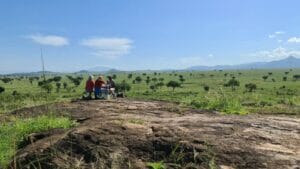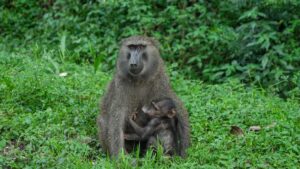Mountain gorillas are one of East Africa’s most incredible animals.
Living in just three countries (and you won’t find them in any zoo), the only way to see a mountain gorilla is to actually travel to its home in the mountainous forests.
As travelers often have many questions for us about these unbelievable creatures ahead of their gorilla tracking experience, we have created this document to share some incredible mountain gorilla facts and answer as many of your mountain gorilla questions as possible.
31 Things To Know About Mountain Gorillas
1. Where are mountain gorillas found?
The mountain gorilla lives in the mountainous forests of Uganda, Rwanda and the Democratic Republic of Congo.
2. What is the mountain gorilla’s scientific name?
The mountain gorilla is also known as gorilla beringei beringei.
3. Are mountain gorillas endangered?
Mountain gorillas are considered endangered by IUCN’s Red List, meaning they are at a serious risk of extinction. This risk comes from a loss of habitat due to human encroachment, as well as violence from poachers that kill or capture mountain gorillas.
4. Are mountain gorillas critically endangered?
Mountain gorillas are no longer critically endangered. As of 2018, mountain gorillas were reclassified from critically endangered to endangered by the IUCN.
Still, conservation efforts are vital to keep this progress happening, especially when considering other gorilla species are still in danger. Critically endangered gorillas include the eastern lowland gorilla, Cross River gorilla, and western lowland gorilla.
5. Does the mountain gorilla have natural predators?
The mountain gorilla has almost no natural predators because of its size, strength, and tendency to live in a family. Though animals like leopards and crocodiles may be able to kill a lone gorilla, especially a young gorilla, they can’t take on a whole family.
6. What is the greatest threat to mountain gorillas?
The greatest threat to mountain gorillas is mankind. As humans clear forests near gorilla habitats, they have less space to live, and with less space to live, there is less space for diverse gorilla families to prosper.
Gorilla conservation work is very important, and in part relies on the stability of the countries where the gorillas live. Despite having the oldest national park in Africa, Congo has the smallest number of mountain gorillas.
7. How much of our DNA do we share with mountain gorillas?
Mountain gorillas share 98.4% of our DNA.
8. What is a silverback mountain gorilla?
A silverback mountain gorilla is the dominant adult male gorilla in a group. Known for its aggressive displays, including chest beating, tree slapping, and roaring, they are identifiable by the silver hair on their back.
Silverback gorillas develop their silver hair around 12 years of age.
As the leader of the group, the silverback mountain gorilla decides all the group’s activities, from where they feed to when they stop to rest. They will protect the group if attacked by humans, leopards, or other gorillas – even if it means fighting to the death.
9. What is a blackback mountain gorilla?
Before mountain gorillas become silverback gorillas at age 12, they are considered blackback gorillas from 8-12 years of age. In this time, they are waiting to develop sufficiently to lead their own troop or family.
10. How many silverbacks does a mountain gorilla group have?
While a group can only have one dominant mountain gorilla silverback, up to 40% of groups have other silverbacks. As long as a hierarchy is established – say a father or brother sticks with the group – they can remain. Though each of the males will share responsibility in protecting the group, the dominant silverback sires most of the offspring.
11. Do mountain gorillas sleep in trees?
While many people believe all gorillas prefer staying in trees, mountain gorillas spend time sleeping and traveling on the ground. For the most part, they are too heavy for a tree to support them and will only climb to collect fruits.
12. Are mountain gorillas aggressive?
Despite stereotypes from movies, mountain gorillas are very calm. They leave in calm, peaceful groups. Attacking and charging are last resorts, and only happen after a gorilla has first communicated its displeasure.
13. Do mountain gorillas eat meat?
The diet for a mountain gorilla is mostly leaves, flowers, tree bark, stems, and roots. Their diet sometimes includes larvae, ants, and bugs.
14. How much do mountain gorillas eat?
A silverback mountain gorilla can eat up to 18 kilograms, or up to 40 pounds, of vegetation in a day.
15. Why do female mountain gorillas leave the group?
Once females reach maturity at 9 years of age, they will leave the group. This is done to protect the genetic diversity of mountain gorillas. These females will find a suitor in another mountain gorilla family, or go with a lone silverback.
16. How big are mountain gorilla babies when born?
An infant mountain gorilla weighs 1.8 kilograms, or 4 pounds, when born. A female mountain gorilla is pregnant for 9 months and normally has just one baby gorilla at a time.
17. Why do gorillas walk on their knuckles?
Mountain gorillas actually have longer arms than legs, helping them to walk on all fours. Knuckle-walking, which is walking on the knuckles of their hands, helps them balance while climbing trees and hills.
18. What color are mountain gorillas eyes?
Though humans may end up with a range of eye colors, mountain gorilla eyes are dark brown with a dark ring around the iris.
19. What makes mountain gorillas unique from one another?
Like humans, mountain gorillas have unique fingerprints. Mountain gorillas also have unique nose patterns, which helps scientists and rangers
20. How strong is a mountain gorilla’s bite?
A gorilla can bite with a force of 1,300 PSI, or pounds per square inch. Tigers and lions bite at 1,000 PSI. And humans? We have a bite force of about 150 to 200 PSI, meaning a gorilla’s bite is 6 times stronger.
21. Which parks can mountain gorillas be found in?
Mountain gorillas can be found in the Virunga Volcanic Range, which is shared by Rwanda, Congo, and Uganda. They can also be found in Bwindi Impenetrable National Park and Mgahinga National Park in Uganda. To see the mountain gorillas you’ll need a permit, so don’t forget to check the 2024 mountain gorilla permit prices here.
22. How many mountain gorillas are left?
The most recent census revealed 1,063 mountain gorillas in the wild. Given the rising population trend and conservation efforts, this number will likely increase with the next census.
23. Where can I see mountain gorillas in zoos?
Mountain gorillas cannot survive any place besides their natural habitat. To see a mountain gorilla family, then, one has to travel to where mountain gorillas live in Uganda, Rwanda, or Congo.
24. How long do mountain gorillas live?
Mountain gorillas have a life expectancy of about 40 years. Because of their lack of natural predators, gorillas mostly die of old age, disease, accidents, or other natural causes.
25. Why do mountain gorillas build sleeping nests?
Gorilla troops do not stay in the same place for long, so they build a new sleeping nest each day from branches and grass. In the morning, they move on in search of food.
26. When do mountain gorillas eat?
Gorillas tend to have two meal times: in the morning and in the evening. During the day, older gorillas will nap and the infants will play.
27. Besides DNA, how are mountain gorillas similar to humans?
Mountain gorillas use tools, learn language, and express emotions like sadness, happiness, jealousy, and more.
28. Can mountain gorillas catch human diseases?
Because mountain gorillas and humans are so similar, it’s possible for mountain gorillas to catch human illnesses. If you are feeling sick or if you have any communicable disease, you will not be allowed to visit with mountain gorillas.
29. What are the main differences between mountain gorillas and lowland gorillas?
The mountain gorilla is the larger of the two, with longer hair and shorter arms than their lowland gorilla cousins. Mountain gorillas can only survive in high altitudes of about 2,200–4,300 metres. Lowland gorillas are much more likely to be seen in the trees, and prefer a more heavily forested, flatter habitat.
Western or lowland gorillas inhabit the forests of equatorial Africa. This includes the lowlands near the Cameroon coast through the Central African Republic, Equatorial Guinea, Gabon, Nigeria, Republic of Congo, Angola, and possibly Congo.
30. When is the best time of year to see mountain gorillas?
While you can see mountain gorillas year-round, the answer depends more on one’s comfort level. The dry season is a more popular time to visit because trekking through the mountains is a bit easier than during the rainy season. This period includes the months of May to September, as well as from from December to the end of February.
31. How many types of gorilla tracking are there?
There are three ways to spend time with the gorillas. The most common is the one-hour permit, where you track a mountain gorilla family with the help of rangers and then spend one hour with them. This costs $1,500 per person in Rwanda and $800 per person in Uganda as of 2024.
The gorilla habituation experience includes tracking the gorillas and then spending the day with them. This costs $1,500 per person in Uganda.
Each of these trips can be done more than once, and with a number of different mountain gorilla families.
—
Go Gorilla Tracking With Kikooko Africa Safaris
Curious to see mountain gorillas in their natural habitat? From 3-day Uganda mountain gorilla safaris that take you straight to the gorillas to 10-day Uganda safaris that introduce you to the gorillas and Uganda’s other incredible wildlife, we’ve developed a number of must-try East Africa safaris (and we’re excited about developing gorilla and golf tours in the future!).
We’d also be delighted to help develop a tour just for you. Let us know what you’re interested in for your upcoming tour and we’ll get started planning today!

